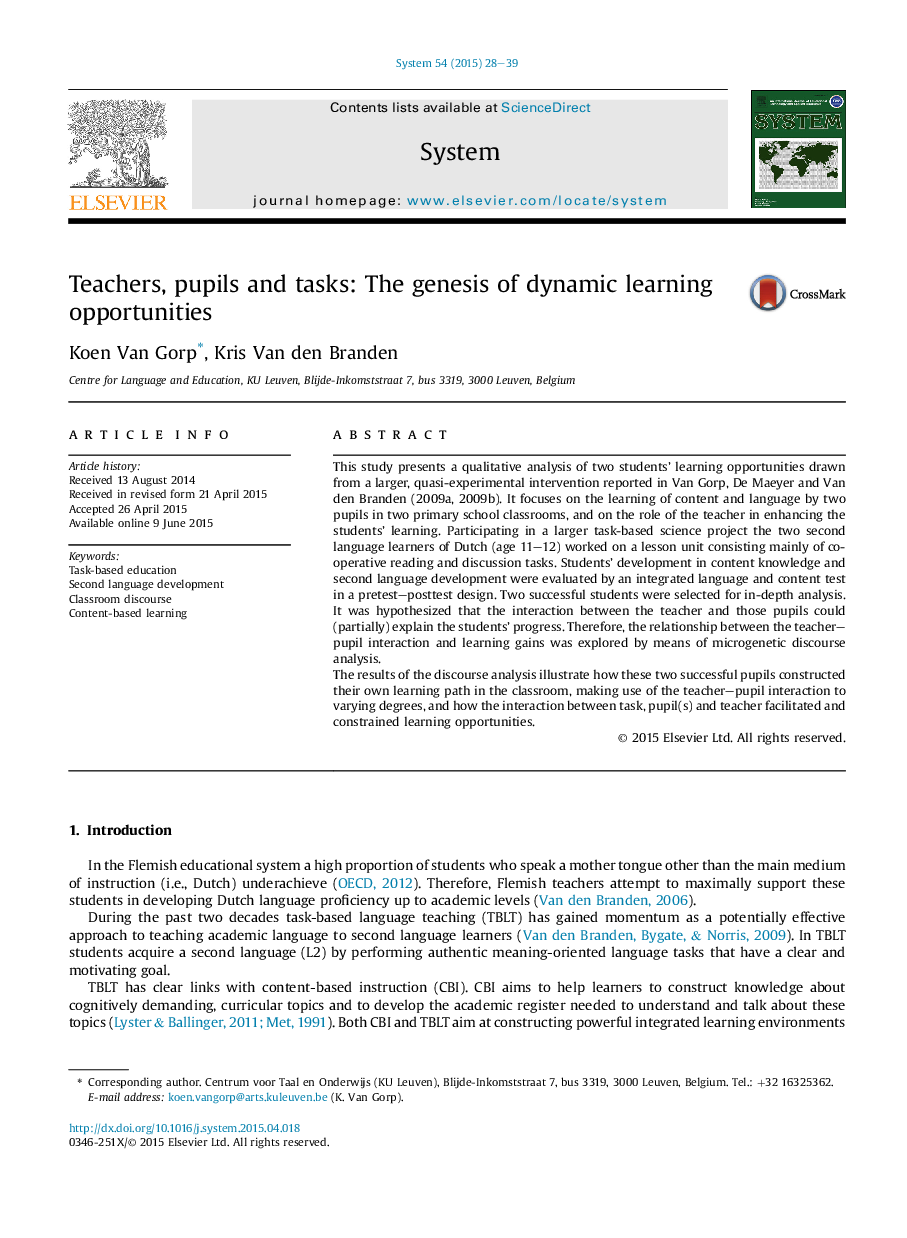| Article ID | Journal | Published Year | Pages | File Type |
|---|---|---|---|---|
| 372925 | System | 2015 | 12 Pages |
This study presents a qualitative analysis of two students’ learning opportunities drawn from a larger, quasi-experimental intervention reported in Van Gorp, De Maeyer and Van den Branden (2009a, 2009b). It focuses on the learning of content and language by two pupils in two primary school classrooms, and on the role of the teacher in enhancing the students’ learning. Participating in a larger task-based science project the two second language learners of Dutch (age 11–12) worked on a lesson unit consisting mainly of co-operative reading and discussion tasks. Students’ development in content knowledge and second language development were evaluated by an integrated language and content test in a pretest–posttest design. Two successful students were selected for in-depth analysis. It was hypothesized that the interaction between the teacher and those pupils could (partially) explain the students’ progress. Therefore, the relationship between the teacher–pupil interaction and learning gains was explored by means of microgenetic discourse analysis.The results of the discourse analysis illustrate how these two successful pupils constructed their own learning path in the classroom, making use of the teacher–pupil interaction to varying degrees, and how the interaction between task, pupil(s) and teacher facilitated and constrained learning opportunities.
